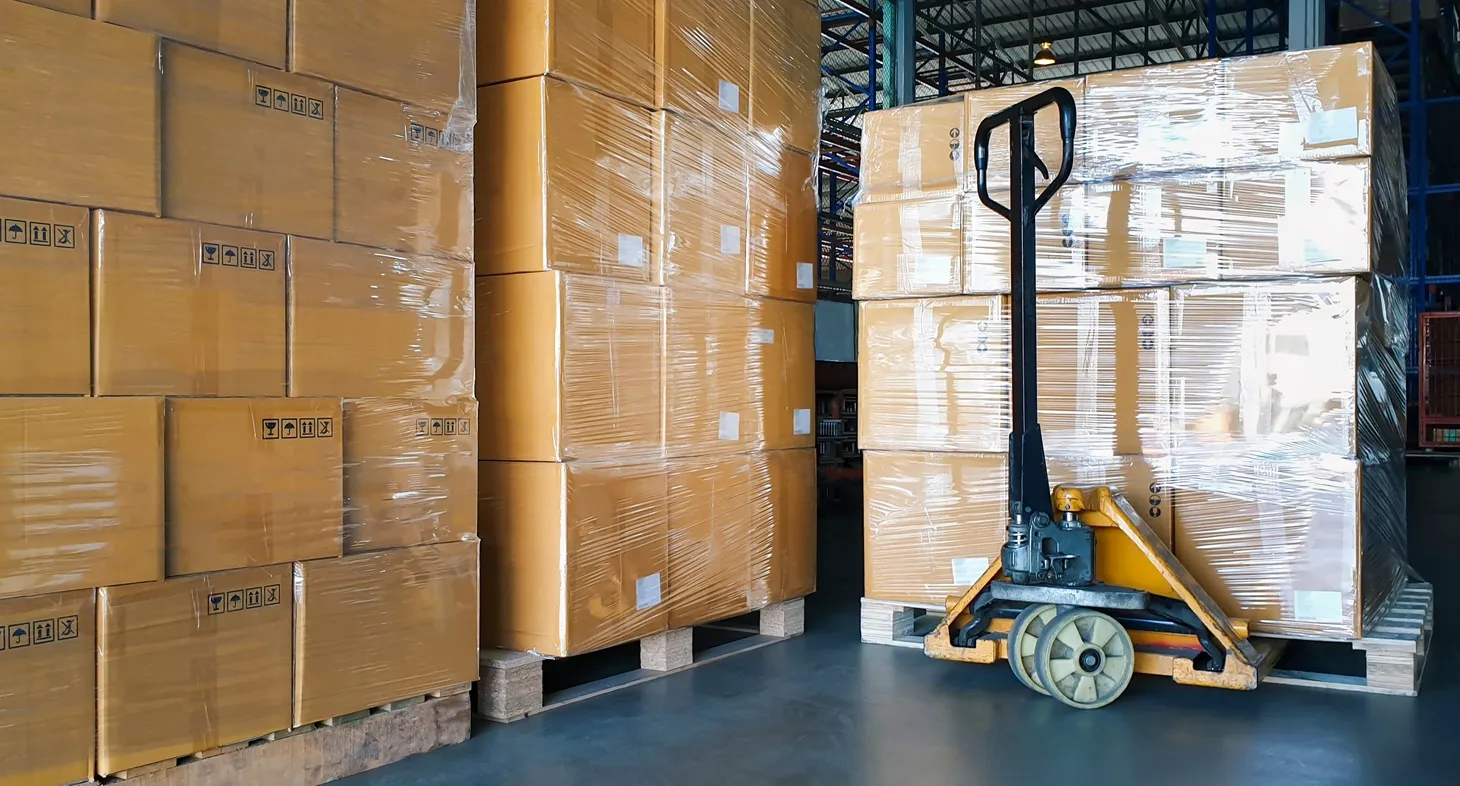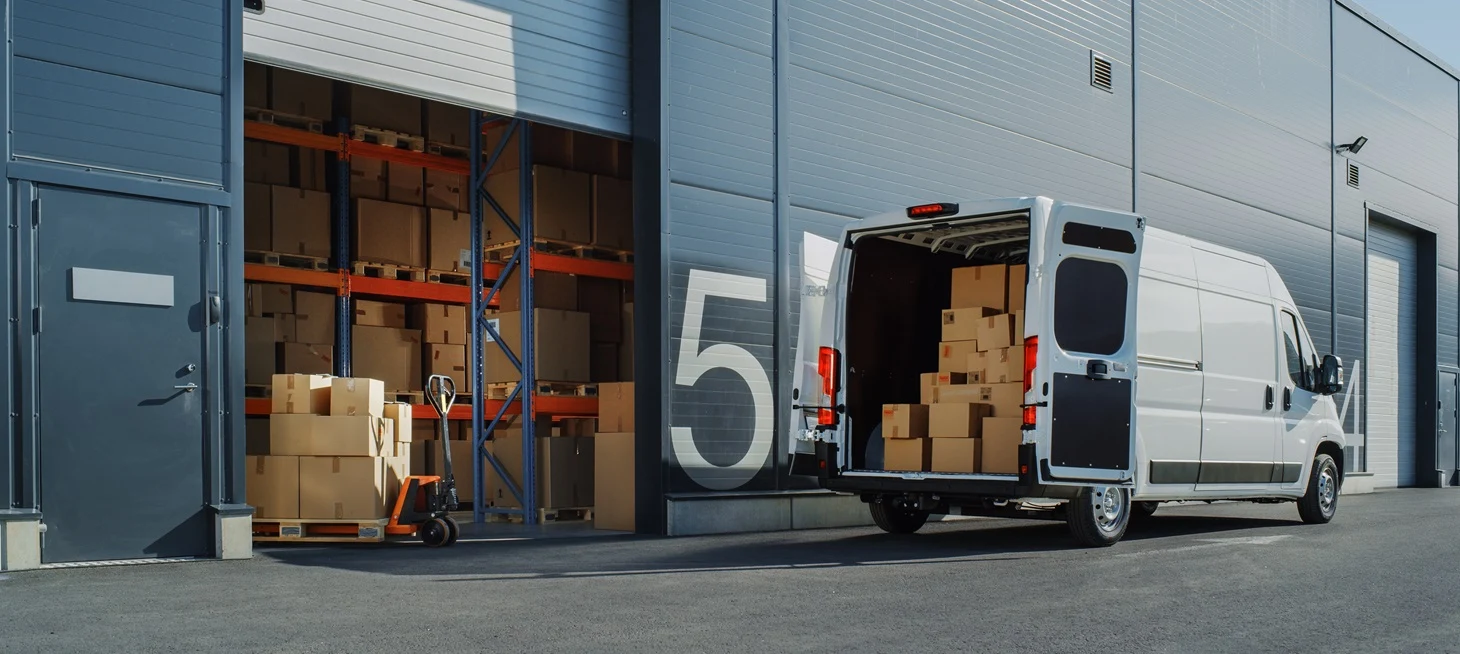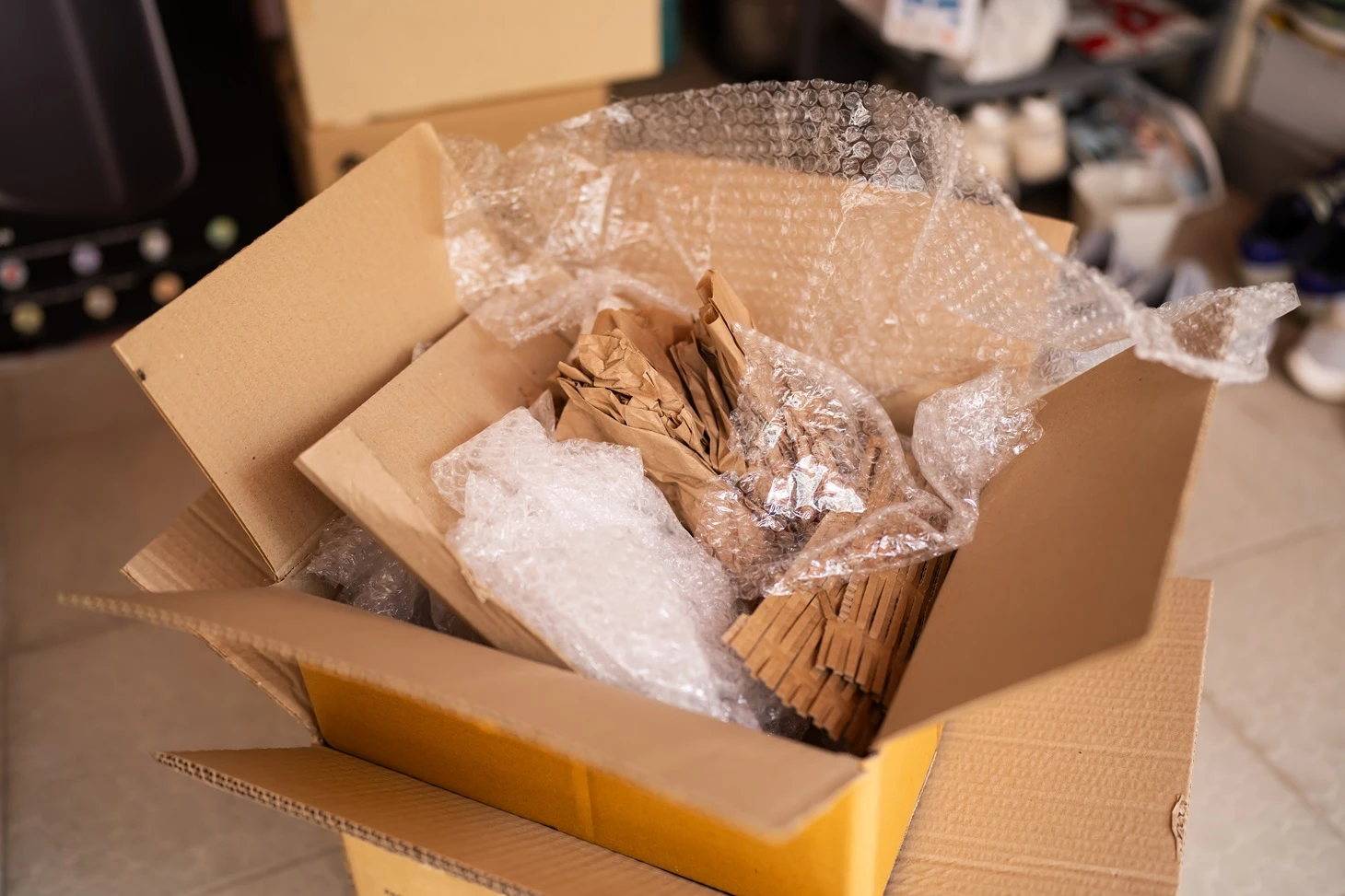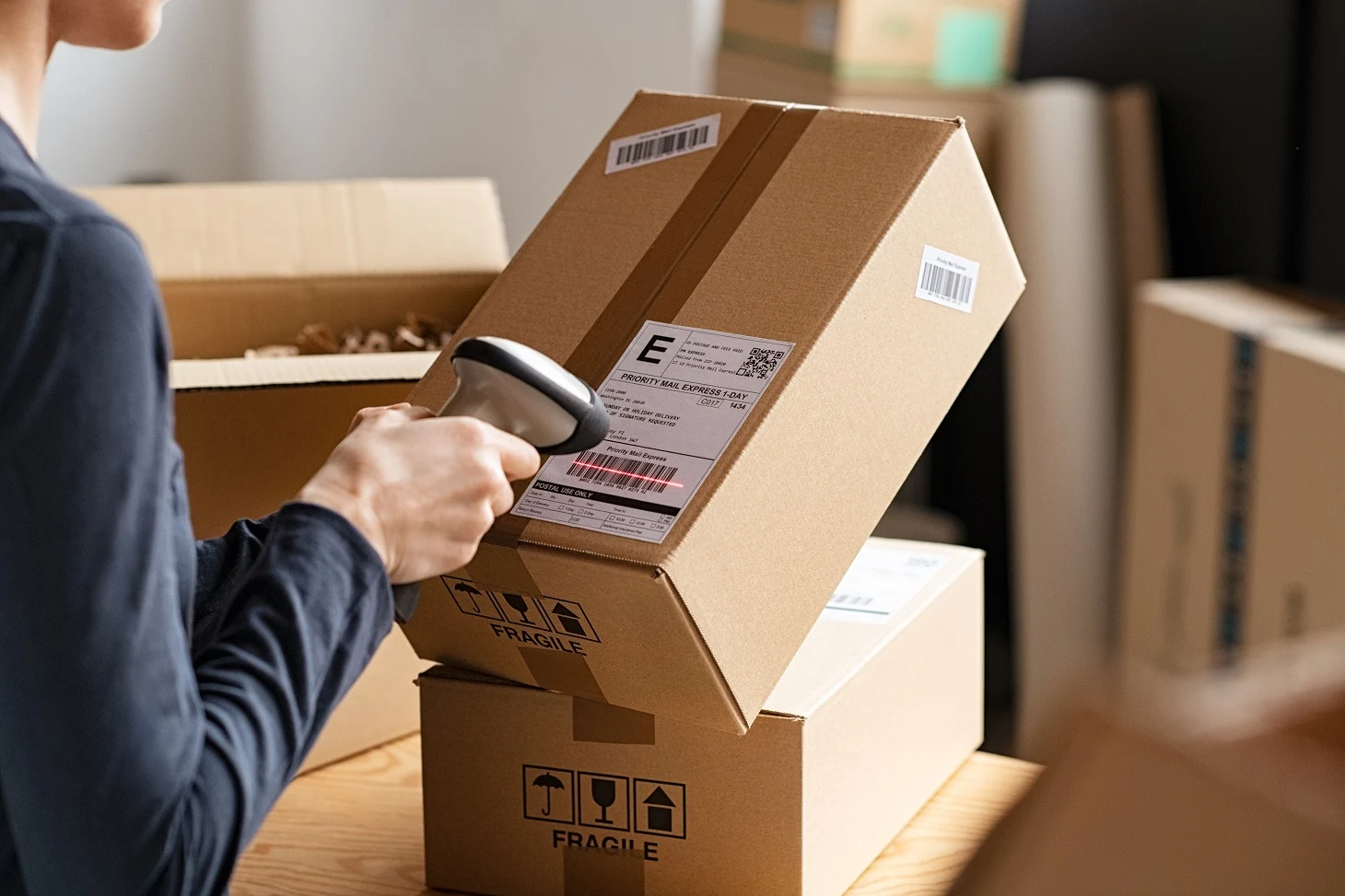Shipping large boxes shouldn’t break the bank or result in a headache. But navigating the maze of shipping options can feel overwhelming. At Brandt Box, we simplify the process. Our expert team provides personalized solutions, negotiating the best rates and ensuring your shipments arrive safely and on time. Contact us today for a free consultation!
Understanding the Costs of Shipping Large Boxes
Shipping large boxes isn’t as straightforward as simply weighing your package and slapping on a shipping label. Several factors contribute to the overall cost, so it’s crucial that you understand the nuances before you ship.
Keep in mind that the price you pay isn’t solely determined by the actual weight of your box but also by its dimensions and the shipping method you choose. To make things even more complex, different carriers also have varying pricing structures and policies.
Dimensional Weight: The Hidden Cost
While you might focus on the physical weight of your package, carriers often utilize dimensional weight (DIM weight) to determine shipping costs, especially for large, lightweight packages.
DIM weight is a calculation based on the package’s dimensions (length x width x height), and it’s designed to account for the space your package occupies on a carrier’s vehicle. Carriers typically use a dimensional divisor (DIM factor) to convert the cubic measurement into a weight equivalent. The higher the DIM weight, the more you’ll pay.
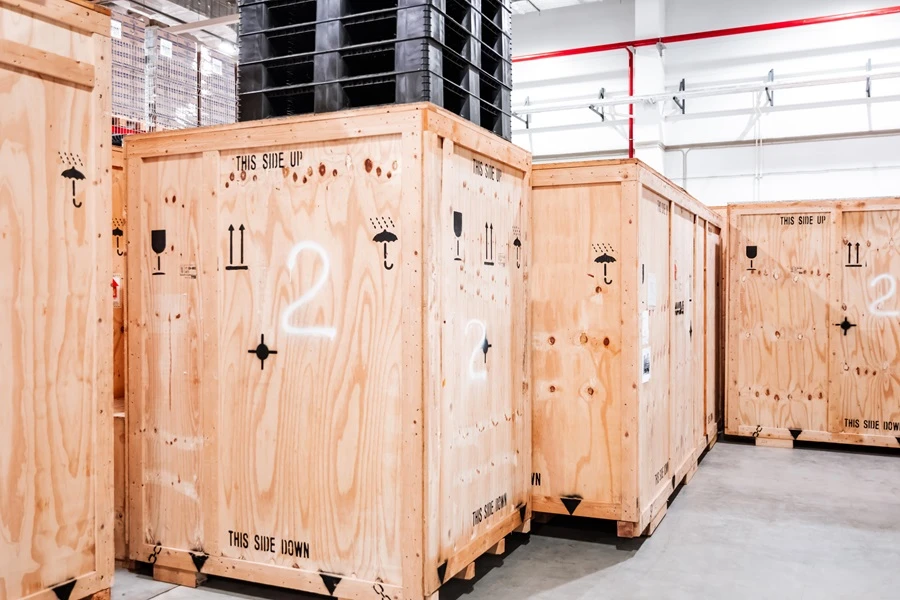
Example calculation:
Let’s say a carrier uses a DIM factor of 139. Your package measures 24″ x 24″ x 36″. The calculation is:
(24 x 24 x 36) / 139 = 149 cubic inches ≈ 15 lbs DIM weight.
If your package’s actual weight is 10 lbs, the carrier will charge you based on the higher DIM weight (15 lbs) because it occupies more space than a similarly-sized package weighing 10 lbs.
Three Main Shipping Methods: Navigating Your Options
Three primary methods are typically used for shipping large boxes, each with its pricing structure and suitability:
- USPS (United States Postal Service): USPS offers various services for shipping packages, including flat-rate options for certain sized boxes and variable pricing for others. USPS is often a cost-effective choice for lighter and smaller large packages, especially for shorter distances, but they have strict size and weight limits.
- Parcel carriers (UPS and FedEx): These carriers provide a wide range of services catering to various package sizes and weights, from ground shipping to various express options. They often use dimensional weight pricing, so the actual weight of your package may not be the determining factor. Their prices vary based on distance, speed of service, and package dimensions. They are generally more expensive than USPS for lighter packages but can be more reliable and efficient for larger, heavier, or time-sensitive shipments.
- LTL/FTL freight (less-than-truckload/full truckload): This option is the most suitable for very large or heavy shipments that often involve palletized goods. LTL shares space on a truck with other shipments, making it more cost-effective than FTL (which uses an entire truck for a single shipment). The price is usually determined by weight and distance, but a minimum weight requirement is often required.
| Feature | USPS | UPS/FedEx | LTL/FTL Freight |
|---|---|---|---|
| Best For | Smaller, lighter large packages; shorter distances. | Larger, heavier packages; faster delivery needed. | Very large or heavy shipments; high volume. |
| Pricing | Flat-rate options for specific box sizes; variable pricing for other sizes. | Dimensional weight pricing is common; flat-rate options are available; variable pricing. | Based on weight and distance; often minimum weight requirements. |
| Speed | Priority Mail (1-3 business days); Priority Mail Express (1-2 business days); Retail Ground (variable). | Ground, various express options available (Next Day Air, 2nd Day Air, etc.). | Variable; generally slower than parcel carriers. |
| Cost | Generally less expensive for lighter packages. | More expensive than USPS for lighter packages; can be more efficient for heavier items. | Can be cost-effective for large shipments; dependent on volume and weight. |
| Size/Weight Limits | Strict size and weight restrictions; vary by service. | Size and weight restrictions apply; varies by service and carrier. | Usually only minimum weight requirements (often around 150 lbs for LTL). |
The better you understand these factors and shipping methods, the easier it is for you to choose the most cost-effective approach for your needs.
Remember! The ‘cheapest’ option depends heavily on the specific characteristics of your shipment, so we encourage you to always get comparative quotes from multiple carriers before making a decision.
For smaller and lighter packages, USPS flat-rate options can be economical, particularly for short distances. However, for larger, heavier, or time-sensitive shipments, UPS/FedEx express services or LTL/FTL freight might be more cost-effective. Dimensional weight significantly impacts pricing for larger packages, regardless of the carrier you choose.
Explore the Details of Shipping Large Boxes with USPS
The United States Postal Service (USPS) can be a surprisingly cost-effective option for shipping large boxes, especially for lighter items and shorter distances. However, it’s crucial to understand their service offerings and limitations before you choose this method. Let’s delve into the details below.
USPS Large Box Options: Flat Rate vs. Variable Pricing
USPS offers several services for shipping large packages. The key choices are:
Priority Mail
A good balance between speed and affordability. USPS offers flat-rate pricing for two specific large box sizes:
- Box 1: 23 11/16″ x 11″ x 12″
- Box 2: 12″ x 12″ x 5½”
Both boxes have a weight limit of 70 pounds and a maximum of 108 inches in length plus girth. Prices will vary depending on your location and the service chosen. For additional sizes, variable pricing applies. Delivery typically takes 1-3 business days but can vary depending on the location.
Priority Mail Express
For faster delivery (1-2 business days), this service also offers flat-rate pricing for the same two large box sizes with the same weight and size limitations as Priority Mail. This is generally more expensive than Priority Mail, though it is a better option if you need guaranteed quick delivery.
Retail Ground
Retail Ground is the most economical option for large and heavy boxes that don’t qualify for Priority Mail or Priority Mail Express. This service is ideal for less time-sensitive shipments, with delivery times longer than Priority Mail. There’s no flat-rate pricing and variable pricing applies. With Retail Ground, dimensional weight charges will apply to all boxes exceeding 1 cubic foot. The weight limit is 70 lbs but the shipment can be up to 130″ in combined length and girth.
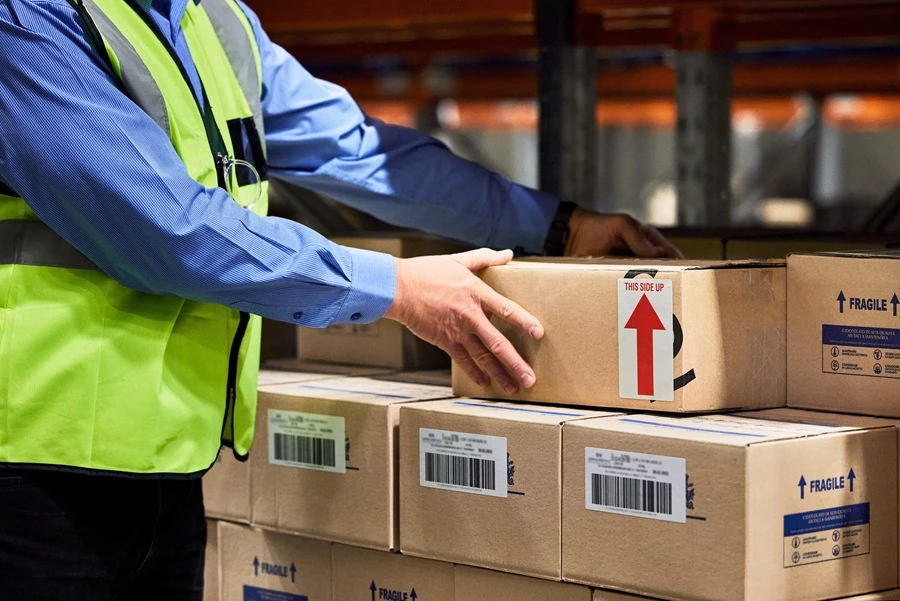
Pricing Examples: USPS Flat-Rate Large Boxes
Note: These prices are only examples and may vary depending on location and time of year. Always check the USPS website for current rates.
Let’s assume a base price of $21.50 for both flat-rate boxes (regardless of distance). Additional charges will apply for added services (insurance, tracking) and any oversized packages.
Variable Pricing: When Flat Rates Don’t Apply
If your large box doesn’t meet the dimensions and weight requirements for USPS flat-rate pricing, variable pricing will apply.
In other words, the price will be calculated based on several factors:
- Weight: Heavier packages cost more to ship.
- Dimensions: Larger packages generally cost more due to space constraints. Dimensional weight may also be a factor.
- Distance: Packages shipped further distances cost more.
- Service type: Priority Mail and Priority Mail Express are more expensive than Retail Ground.
Limitations: Size and Weight Restrictions
It’s crucial to remember that USPS has strict size and weight limitations on packages, especially for their flat-rate options. If you exceed these limits, it will result in variable pricing and potentially significant cost increases. Be sure to accurately measure your package and check USPS’s guidelines before you ship to guarantee you choose the appropriate service for your needs. Otherwise, it may lead to delays, returns, or unexpected additional charges.
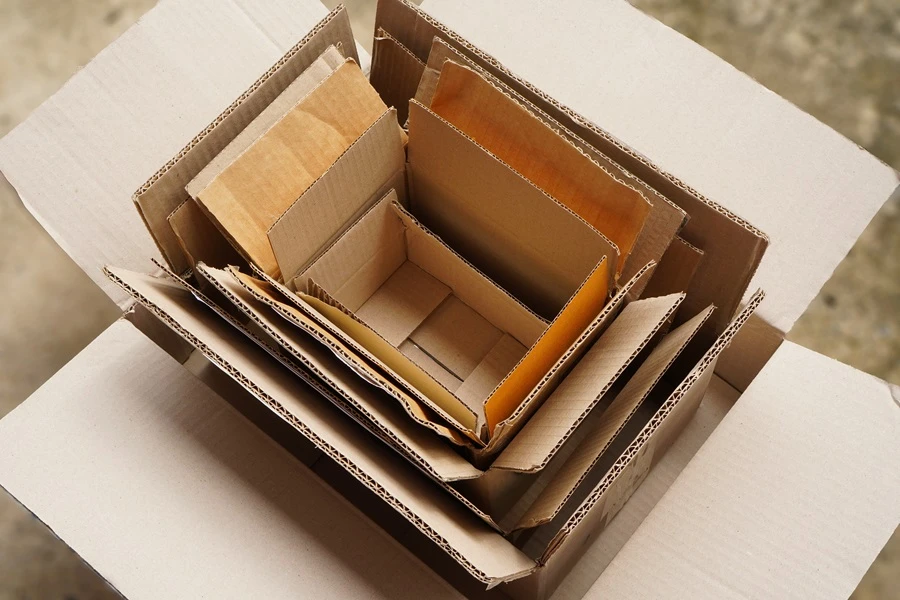
Shipping Large Boxes with Parcel Carriers: Speed and Reliability, But at What Price?
UPS and FedEx are major players in the parcel shipping industry as they offer a wide range of services to meet diverse shipping needs. They provide reliable and efficient delivery, especially for larger, heavier, or time-sensitive shipments, but come at a higher price point compared to USPS for smaller packages.
Let’s examine their key offerings:
UPS and FedEx Service Options: Ground vs. Express
Both UPS and FedEx offer a spectrum of services, broadly categorized into ground and express options:
- Ground shipping: The most economical option for less time-sensitive shipments. Delivery times are typically longer than express services but are considerably cheaper.
- Express shipping: Offers several expedited services (e.g., Next Day Air, 2nd Day Air, etc.) for time-sensitive deliveries. Pricing increases with speed, and these options are ideal for crucial shipments needing guaranteed delivery times.
Flat Rate vs. Dimensional Weight Pricing: Understanding the Calculation
UPS and FedEx both use a combination of flat-rate and dimensional pricing:
- Flat-rate pricing: Some services offer flat-rate pricing for specific box sizes and weight limits to simplify price calculation. This is more predictable but may not be the most cost-effective option for every package.
- Dimensional weight pricing: For larger, lighter packages, dimensional weight often determines the cost. This is calculated using the package’s dimensions (length x width x height), and a DIM factor is applied to obtain a dimensional weight, which is then compared to the actual weight. The higher of the two weights is used to determine the shipping cost. Dimensional weight helps ensure that shippers pay appropriately for the space their package occupies on the carrier’s vehicle.
Example:
Let’s say a carrier’s DIM factor is 139. A package measuring 24″ x 24″ x 36″ results in: (24 x 24 x 36) / 139 = 149 cubic inches ≈ 15 lbs DIM weight. If the actual weight is 10 lbs, the carrier will charge you based on the higher DIM weight (15 lbs).
Pricing Examples: UPS and FedEx (Illustrative)
Below, we outline some price ranges (obtained from the provided examples). Actual pricing will significantly vary based on many factors, including specific service levels, package dimensions, weight, and shipping distance. As always, we encourage you to get quotes directly from UPS and FedEx for accurate pricing.
| Carrier | Service Type | Weight (lbs) | Price Range (USD) |
|---|---|---|---|
| UPS | Ground | 10 | $19.60-$98.25 |
| 60 | $87.25-$384.20 | ||
| Next Day Air Early | 5 | $177.07 | |
| FedEx | Ground | 10 | $19.00-$98.25 |
| 60 | $87.25-$384.20 | ||
| First Overnight | 10 | $112.60-$1201.45 |
Size and Weight Limitations
UPS and FedEx impose size and weight limits which vary across their service options. If you exceed these limits, it can lead to additional charges, including oversized fees. Always check the specific guidelines and restrictions for each service level before shipping, ensuring your package dimensions and weight comply. If you don’t comply, it can result in delays, returns, or significantly higher costs.
Shipping Large Boxes with LTL/FTL Freight
Less-than-Truckload (LTL) and Full Truckload (FTL) shipping are freight options best suited for large-volume or heavy shipments that exceed the capabilities of traditional parcel carriers (USPS, UPS, FedEx).
Let’s explore these options:
Understanding LTL and FTL Freight Shipping
- LTL (less-than-truckload): LTL shipping involves consolidating your shipment with other goods from different shippers onto a single truck. This shared space makes LTL a cost-effective option for large or heavy shipments that don’t need a dedicated truck. Your shipment is typically palletized (secured on a pallet for efficient handling). The pricing is based on weight and the distance your goods must travel, and there’s often a minimum weight requirement (typically around 150 lbs).
- FTL (full truckload): FTL uses an entire truck for a single shipment. It’s the most expensive option but provides superior security, faster transit times, and greater control. It eliminates the risk of damage or loss caused by handling and consolidation with other shipments. FTL is ideal if you have particularly large, high-value, or time-sensitive shipments.
When LTL/FTL Is Most Cost-Effective
LTL and FTL shipping are typically more cost-effective than parcel carriers in the following scenarios:
- Multiple boxes: Shipping numerous large boxes is often cheaper with LTL than using multiple parcel shipments.
- Heavy items: Items exceeding the weight limits of parcel carriers are best shipped via freight. LTL is a viable option when the weight is significant but doesn’t require a full truckload.
- Long-distance shipping: For long-distance shipments, the cost savings of LTL become increasingly prominent, especially when comparing it against the accumulated cost of numerous smaller parcel shipments.
- Palletized goods: Items that are palletized are ideally suited for LTL shipping. The pallet’s standardization facilitates efficient handling and reduces the risk of damage.
LTL Freight Pricing Examples
Just like other pricing we’ve discussed, LTL pricing varies depending on the weight of your shipment.
| Weight (lbs) | Distance (Example) | Estimated LTL Price Range (USD) |
|---|---|---|
| 300 | Philadelphia to Los Angeles | $600-$1000 |
| 600 | Philadelphia to Miami | $700-$1200 |
LTL vs. White Glove Service: A Premium Option
LTL shipping typically involves curbside pickup and delivery. However, you might want to opt for a White Glove service for added protection and convenience:
- LTL: Standard LTL involves curbside pickup and drop-off. You’re responsible for loading and unloading the shipment. This offers cost savings but requires more manual effort.
- White Glove: This premium service offers door-to-door delivery, including placing the shipment indoors, professional packing, unpacking, and potentially even debris removal. It’s more expensive but provides superior care and convenience, so it’s ideal for fragile, high-value, or bulky items that need specialized handling.
Stop Overspending on Shipping: Expertly Crafted Brandt Box Solutions Await
Choosing the most economical shipping method for large boxes means you need to carefully consider several factors — weight, dimensions, distance, and the specific needs of your shipment.
While USPS can be cost-effective for smaller, lighter packages, parcel carriers (UPS and FedEx) offer greater speed and reliability for larger or more time-sensitive goods. For heavy shipments, LTL or FTL freight may provide the most cost-effective solution. There’s no one-size-fits-all approach and you’ll need to factor in your business’ needs when making your decision.
By understanding these options and employing the strategies outlined in this guide, you can optimize your shipping costs and ensure your packages arrive safely and on time. However, you still might need some help. Ready to find the perfect solution for your next shipment? Contact us at Brandt Box today for a consultation! With seven decades of experience, our team is passionate about providing innovative packaging solutions at fair prices.

